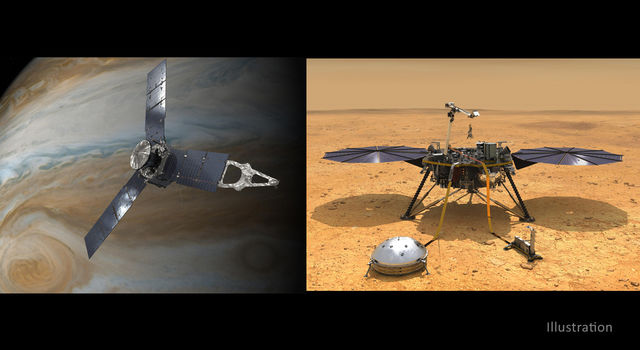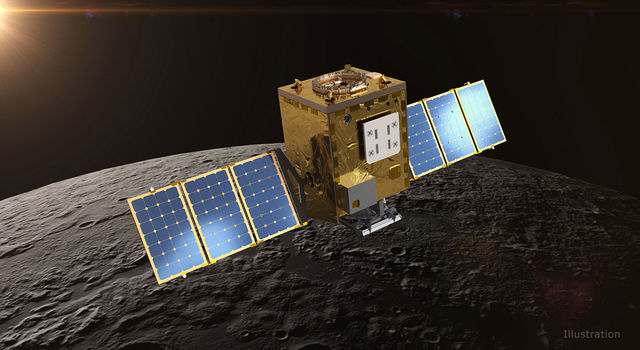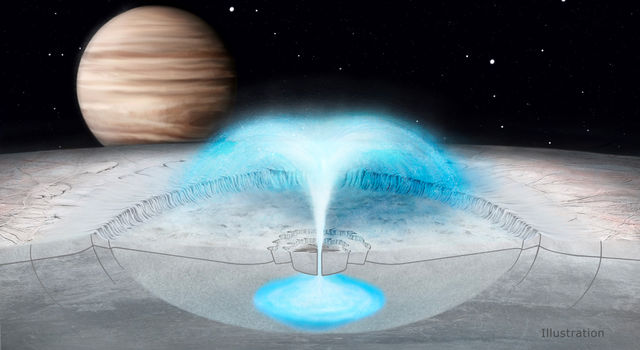Blogs | JPL | November 5, 2008
Exciting Times for Cassini
It's an exciting time in Cassini-land these days! We are well into the Equinox Mission, an extension to Cassini's mission that includes seven flybys of the Saturnian moon Enceladus, discovered in July 2005 to be geologically active. Prior to the prime mission, we knew that Enceladus was interesting and unique, and thus planned and executed three targeted flybys for the prime mission. With the tremendous discovery of water plumes at the south pole of this small icy moon (which happened on the second targeted flyby), we planned a more in-depth investigation for the Equinox Mission. And we are well into it! Our first Enceladus flyby of the Equinox Mission was in August, and we had two in October.
My job on Cassini is two-fold: I am on the science planning team, helping to plan out the science activities that occur during each icy moon encounter, and I am on the team for the ultraviolet imaging spectrograph instrument, studying ultraviolet data of the surfaces of these icy moons. So it’s really fantastic to be involved in planning each encounter, and then analyzing data to understand the moons.
In order to learn as much as we can about crazy Enceladus (it's so small and icy -- yet it's got these geysers!), we want to let all of the instruments make measurements, and it isn't possible to simultaneously get measurements from all instruments. (That's just the way the spacecraft is built.) We know that the cameras will tell us a lot about the current and historical geology of the surface, the ultraviolet and infrared imagers will tell us about the surface composition, and the long-wavelength infrared instrument will reveal surface temperatures. These four "remote-sensing" instruments can take data simultaneously. But if we want to get the best data from the "in situ" instruments (like the ion and neutral mass spectrometer and cosmic dust analyzer), we need to orient the spacecraft such that it's nearly impossible to get remote sensing data. So we divide up the flybys and allow many instruments the opportunity to get data. The period around the closest approach during the August flyby (called "E4") was allocated to the remote-sensing instruments -- and this resulted in the highest-resolution images of the active "tiger stripes" ever! (See one of these images here: http://photojournal.jpl.nasa.gov/catalog/PIA11113) The closest approach of the next Enceladus flyby - called "E5," on October 9 -- took the spacecraft deeper into the south polar plume than ever before. Here the priority was given to the in situ instruments, which obtained great, high-signal data of the plume, telling us about the composition of both the gaseous and particle components. And the October 31 flyby - called "E6" -- was again dedicated to remote-sensing, for a last look at the south pole before it heads mostly into seasonal darkness.
It’s so fortunate that Cassini has multiple opportunities to execute close encounters of an object as dynamic as Enceladus. The Voyager spacecraft had just one shot as they flew through the Saturn system, but Cassini, as an orbiter, gives us the chance to analyze our data, figure out what we’ve learned, and make thoughtful decisions on what experiments we need to make to follow up on those discoveries.
Things aren’t completely within our control, however! For instance, southern summer in the Saturn system is coming to a close, limiting the amount of sunlight illuminating the fascinating south polar region of Enceladus. But there’s plenty of important science to do in the dark with the in situ instruments, as well as the composite infrared spectrometer and radar, which is great. Who knows — we’ll see what the equinox season (and hopefully the following solstice) has in store for us! We may get some surprises!
TAGS:SATURN, SOLAR SYSTEM, CASSINI, ENCELADUS, MOON







